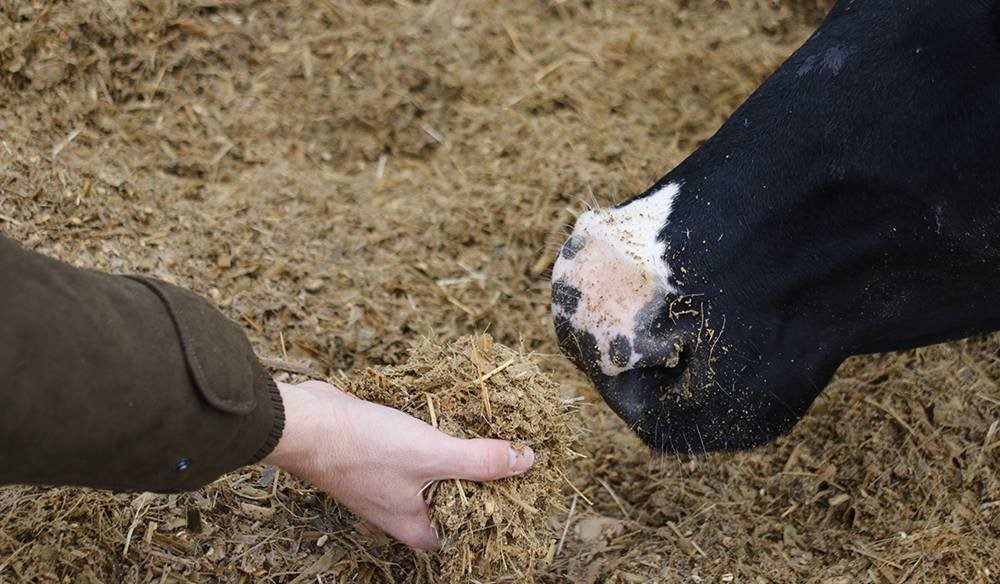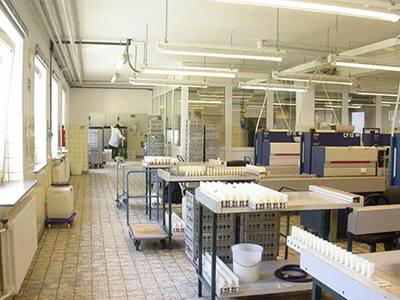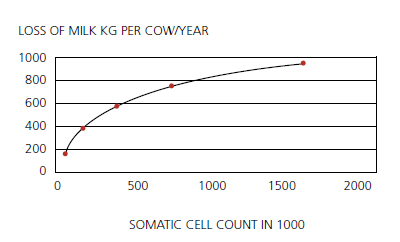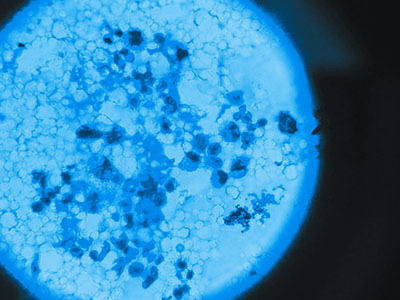
11-04-2021

An early warning about cows at risk coupled with an all-inclusive approach to treatment can hold the answer to reduced incidence with less dependence on antibiotics.
While a lot of progress has been made with Mastitis management, more can be done to combat the disease that still costs the dairy industry millions every year. An early warning about cows at risk coupled with an all-inclusive approach to treatment can hold the answer to reduced incidence with less dependence on antibiotics.
‘All I have to do is dream’: How better to start an article about advances in raw milk testing than listening to the ‘Music for cows’ playlist on a well known music streaming service.
A little online research soon shows-up more content about the power of music over animals. This ranges from videos of trombone-playing dairy farmers to scientific studies such as the University of Leicester study from 2001 which indicated a positive effect on welfare and milk yield from particular tunes, thus inspiring the above-mentioned playlist. The Everly Brothers is right up there among cow favorites apparently, with the music shown to improve productivity and general well-being of cud-chewing listeners.
Of course, just playing a few tunes is never going to be enough to stop dairy herds going down with the disease that costs the global dairy industry millions per year. If only it was that simple. Dairy farms around the world would simply have to invest in a beat box instead of agonizing over what to do with sick animals.

Despite gains made through routine testing of dairy herds, Mastitis still costs the dairy industry millions every year
Mastitis problem and potential
“Farmers just want to have healthy cows they don’t have to do anything extra with,” Says Dr Ann Nyman from Växa Sverige the largest livestock organization in Sweden who was presenting at the 2019 IDF ICAR conference in Copenhagen.
Such is the importance of improving mastitis management, the IDF conference is held every four years to capture latest developments and research from around the world. It is relevant because mastitis is a very complex disease influenced by multiple factors such as the environment and the keeping and feeding of cows. In addition, the pathogens that cause mastitis are constantly evolving and this requires altered mastitis management programmes.
A further consideration is that a dairy cow today is bred for high milk yield which can put a strain on their immune system, particularly in the period after calving. The energy demand often exceeds the energy intake, leading to stress on the metabolic system and making them susceptible to diseases and disorders. Despite well-established mastitis management programmes, on average, 50 clinical and sub-clinical cases occur per 100 cows per year, so roughly every second cow is still affected with mastitis.
Another IDF conference presenter, Lucio Zanini from the ARAL milk testing laboratory in Lombardy offers insight based on his work as a milk quality consultant. “Masitis is still a big problem and based on the data about milk intake and milk sold, we can see that we are losing a lot of milk,” he says.
In financial terms, mastitis cases occurring in the early stage of lactation can cause reduced production of up to 500 kg of milk over the entire lactation. When cows receive mastitis treatment (i.e. antibiotics), their milk cannot enter the food chain and the amount of discarded milk can easily be 100-300 kg. Considering all costs related to mastitis (for example, treatment, discarded milk, increased labour), one case costs the dairy farmer from around €100 to €950.

Somatic cell count and other tests
Milk testing laboratories have been able to spot cows with mastitis for many years using total somatic cell count as an indicator. With the advent of high throughput analysers using flow cytometry technology in the late 70s/early 80s somatic cell count has become a cornerstone of milk testing laboratory services and has led to a significant improvement in mastitis management. Mastitis can be clinical (SCC usually > 1 mill.) or sub-clinical (usually 200,000 < SCC < 1 mill.).

Somatic cells are white blood cells (leukocytes) and cells from the udder secretory tissue (epithelial cells) which eliminate infections and repair tissue damage done by bacteria.
A more specific test to identify types of mastitis is available using a PCR (polymerase chain reaction) test. Up to 16 different mastitis-causing pathogens can be analysed with the method. But unlike the total somatic cell test taking a few seconds, the PCR test takes around five hours. The interpretation of test results can be difficult, for example, due to false-positive results because of contamination or carry-over. The test is also quite pricy for the dairy farmer (roughly €15-€20 per cow).
Two other tests are Lactoferrin and Milk amyloid A (MAA).
Lactoferrin is a component of the mammalian immune system and naturally present in milk. The parameter can be predicted using high-throughput Fourier transform infrared technology instruments which would allow an analysis at low cost, or using a costlier and labour intensive enzyme-linked immunosorbent assay (ELISA) test. However, the value of lactoferrin as a parameter for mastitis screening remains unclear.
MAA is a (lipo-) protein with various functions in the immune system and has been identified as an indicator for mastitis. The protein can only be determined using a purpose-built ELISA, which is labour and cost intensive. Further research on DHI samples is needed to determine the potential.
Mastitis early warning
A newcomer to the analytical landscape is differential somatic cell count (DSCC) which is essentially a ‘drill down’ of the total somatic cell count test. It offers a new biomarker that can indicate the probability of a cow getting mastitis.
The test is interesting for the dairy industry because, today, mastitis management is based on reacting to elevated somatic cell counts in dairy herd samples, often with antibiotic treatment. However, preventive measures could lead to a more efficient use of precious resources such as feed and water because the amount of milk delivered from dairy farms could be increased without increasing herd size or productivity per cow.
“We don’t treat cows with subclinical mastitis with antibiotics, but there are still some things you can do,” says Dr Nyman from Växa Sverige. Specific options include more frequent milking to remove bacteria and segregation of animals into special care groups with better feed and so on.
The IDF conference offered a timely status on efforts to implement the innovative new differential somatic cell count test in everyday milk testing operations. Nyman is working on a study to see if DSCC could be used to give a better and more sophisticated level of information to dairy farmers using data from FOSS differential somatic cell count instruments at use in a local milk testing laboratory.
A particularly interesting grouping revealed by the DSCC test is those cows with low total somatic cell count but high differential somatic cell count. This can show a high probability of the disease at an early stage. “Maybe it is that group you should look at, but at the moment it is totally ignored because of the low total somatic cell count - I can see different things to do,” says Nyman.
While regular testing of individual cows for dairy herd improvement purposes has had a big impact on the incidence of mastitis, the disease still hurts the supply chain in a number of ways including unwanted veterinary bills, use of antibiotics, milk retention, decreased yield, poor quality milk, reduced payment and culling.
A potential pay-off could be a more rational use of PCR testing. “Knowing which groups to focus on to rationalize sampling can reduce costs,” she adds. “The farmers need to pay for the test, so they need to get something extra. Even if it is low cost, for all cows over a year it still adds up. However, cost of sampling and tests with PCR is expensive, so if that can be reduced significantly it would make a difference. It could be good if we find the break-even point.”
A new proactive approach beyond antibiotic dependence
Another potential benefit of having a more comprehensive picture of Mastitis is that the use of antibiotics used for mastitis treatment could be reduced – an aspect that Lucio Zanini from ARAL milk testing laboratory has a clear opinion about. “Our experience is that it is a good idea to not to only look at the chronic cases. Over the last decade we can see that antibiotics don’t work so well,” he says.
The laboratory has installed a new milk analyser from FOSS that can deliver analytical data for differential somatic cell count alongside the traditional total somatic cell count. Zanini explains how the goal is to get better insight about cows with lower levels of total somatic cell count. “We think it is very interesting to understand the management of mastitis. This is a new index for farmers to understand what they are working with. The idea is to prevent new infection. It is all about being proactive because less milk is lost this way.” A study has been performed with four large dairy farms over a four month period. Regular and comprehensive data was provided in the form of graphs and colour-coded graphics showing cow groupings according to cell-count thresholds. Further collaboration is now required throughout the supply chain to make effective use of the data. “All farmers and vetinarians involved in the study asked: “Ok, but what do we do now?” says Zanini.
All inclusive
Nyman shares a similar ‘will it fly’ experience, but also points out that it is not unusual for new tests to realise their full potential. “We have not lost hope. We started with total somatic cell count 30 to 40 years ago and no one really knew what to do with it,” she says. “It is similar with differential somatic cell count. We have to find where the profit is. We have not seen the right way of using it yet.”
“It is all about being proactive because less milk is lost that way”
While the well-established somatic cell count (SCC) is still the proven go-to parameter for rapid mastitis screening, differential somatic cell count clearly has potential as an additional biomarker to help detect the onset of the disease. This can support a more proactive ‘all-round’ approach beyond reactionary use of antibiotics and help to make best use of the quite pricey PCR tests.
Who knows, alongside traditional cow-comfort and feeding options, a few more tunes from the ‘Music for cows’ playlist might be just the thing to help the humble dairy cow to cope with the demands of dairy farm life. Further hits for up-on-the-beat dairy farmers to choose from include ‘Just a perfect day’ by Lou Reed, not forgetting ‘The Ring of Fire’ by Johnny Cash.